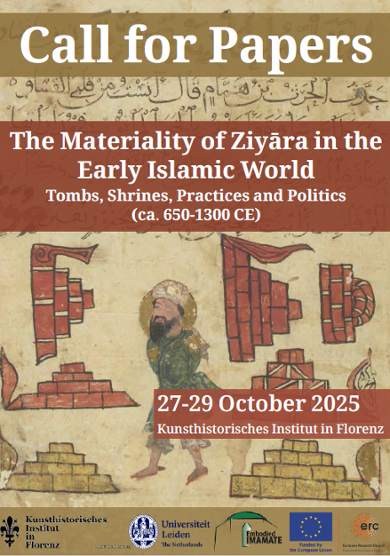Conference
The Materiality of Ziyāra in the Early Islamic World Tombs, Shrines, Practices and Politics (ca. 650-1300 CE)
- Date
- Monday 27 October 2025 - Wednesday 29 October 2025
- Explanation
- This workshop is organized by Leiden but will take place in Florence
- Location
- Kunsthistorisches Institut
Florence - Room
- t.b.a.
Call for Papers
Marking graves, building tombs, and performing funeral rites are disapproved of—or outright forbidden—by certain segments of Islamic law, with the strictest interpretations labelling these practices as anti-Islamic innovations (bidaʿ). Various prophetic ḥadīths in the canonical collections of the 3rd/9th century categorically prohibit plastering (tajṣīṣ), constructing (bināʾ), and inscribing (kitāba) on graves and firmly oppose visiting, praying at, or even sitting near them. The effects of this radically prohibitive stance have persisted in modern times as manifested in the systematic destruction of tombs and mausolea by the Wahhabis in Saudi Arabia.
This notwithstanding, a substantial body of material and textual evidence attests to precisely the opposite: namely, that by at least the 3rd/9th and 4th/10th centuries, marking, constructing, and visiting tombs was already firmly established as one of the most distinctive features of Islamic culture and practice. As Oleg Grabar notes, “one of the most characteristic buildings of Islamic architecture is, without doubt, the monumental tomb”—a phenomenon suggesting the pre-existence of a cultural and ritual dimension in early Islam centred around ziyāra, the visitation of holy places associated with revered figures and their legends. This challenges the common notion that a prohibitive Islamic orthodoxy concerning burials and commemoration was followed by a deviant innovation in the 3rd/9th-4th/10th centuries. Instead, it suggests that commemorative practices and prohibitive stances both emerged at an early stage, as coexisting and interdependent phenomena.
But how, when, and where did ziyāra originate, and what are the earliest material records of it?
Read more in the call for papers!

